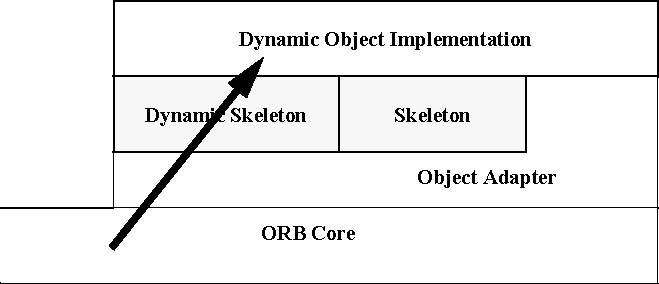
| Previous | Table of Contents | Next |
The Dynamic Skeleton Interface is a way to deliver requests from an ORB to an object implementation that does not have compile-time
knowledge of the type of the object it is implementing. This contrasts with the type-specific, OMG IDL-based skeletons, but
serves the same architectural role.
DSI is the server side’s analogue to the client side’s Dynamic Invocation Interface (DII). Just as the implementation of an
object cannot distinguish whether its client is using type-specific stubs or the DII, the client who invokes an object cannot
determine whether the implementation is using a type-specific skeleton or the DSI to connect the implementation to the ORB.
.

Figure 8-1 Requests are delivered through skeletons, including dynamic ones
DSI, like DII, has many applications beyond interoperability solutions. Uses include interactive software development tools
based on interpreters, debuggers and monitors that want to dynamically interpose on objects, and support for dynamically-typed
languages such as LISP.